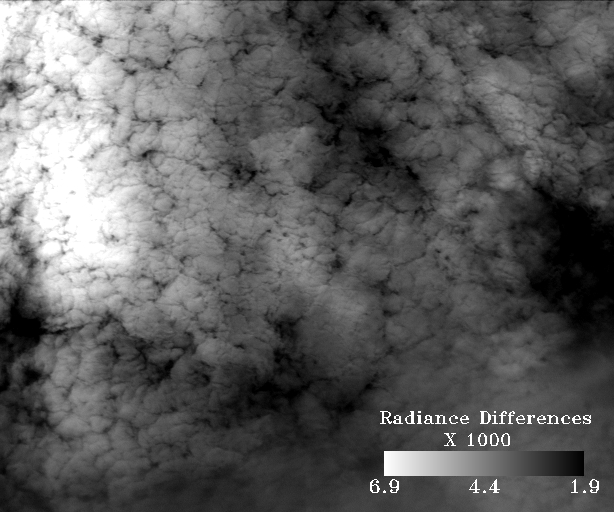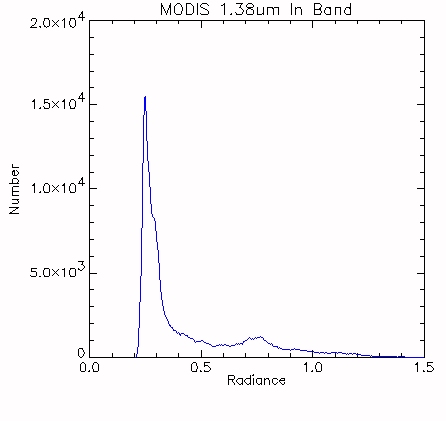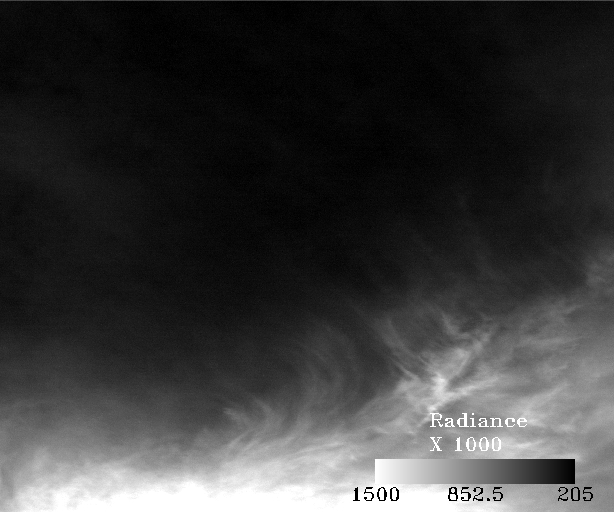
Above is a ratio image of the Out-of-Band to the In-Band.

Above is a histogram of the ratio of MODIS 1.38um Out-of-Band response to In-Band response. The maximum ratio value is 0.0267 and the minimum ratio value is 0.0019. The current ABI manufacturing specifications literature states: "The out of band response is defined...as one minus the integrated response between the 1% response points divided by the integrated response from 0.3 microns to 20 microns. Out of band response shall be less than 0.1% (0.001) of the total signal when viewing either a 300 K blackbody (for channel wavelengths > 3 microns ) or a 100% albedo scene above the atmosphere assuming no attenuation." The MODIS 1.38um ratio of Out-of-Band to In-Band response lies outside the ABI requirements, but has been shown to sufficiently accomplish 1.38um band desired tasks. Thus the current ABI requirements are quite sufficient.

Above is a difference image between the (Out-Band + In-Band) - In-Band.

Above is an image of the MODIS 1.38um In-Band radiances.

Above is a histogram of the MODIS 1.38um In-Band radiances.

Above is an image of the MODIS 1.38um Out-of-Band and In-Band radiances.

Above is a histogram of the MODIS 1.38um Out-of-Band and In-Band radiances.
View page where out-band RF has been multiplied by 10.
Similar techniques were applied to the SCAR-B and Linden scenes and produced very similar results. Due to high amounts of noise where signal is very small the SCAR-B and Linden ratio images and histograms are not shown.
View noise (at 1.38um w/ a equalization enhancement) for the cirrus scene linden scene and scar-b scene. Notice the Linden and SCAR-B scenes have much more noise than the cirrus scene.